MO NT.LabelFree 非标记版通过样品内源性的色氨酸荧光进行检测

Monolith NT.非标记版利用色氨酸的荧光
不同于 NT.115 系列仪器,Monolith NT.非标记型利用色氨酸的自发荧光进行检测,实现了真正的免标记,样品非固定。由于不需要荧光标记或荧光融合蛋白,用NT.非标记型可检测蛋白在其天然状态下的相互作用。
除解离常数之外,MST数据包还提供独到的样品性质和聚集情况信息,以便快速完成实验设置。
主要特点:
1. 真正的无标记,样品非固定
2. 检测范围:解离常数10 nM – mM
3. 应用范围:离子,小分子,糖与蛋白的结合
4. 样品消耗低:每个滴定点只需4 µl
5. 分子大小无限制:小到低分子量分子间,大到核糖体间的结合均可检测
6. 数分钟内获得Kd值
7. Kd-Plus:获得Kd值同时附加独到的样品性质和聚集情况信息
8. 免维护
9. 操作方便:样品准备简单,软件界面友好直观
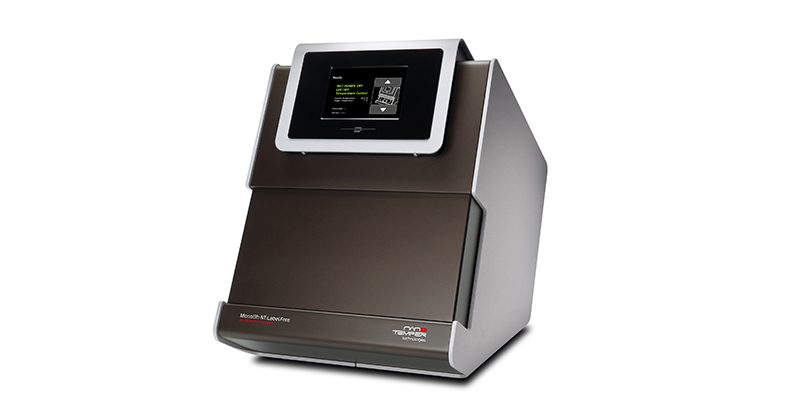
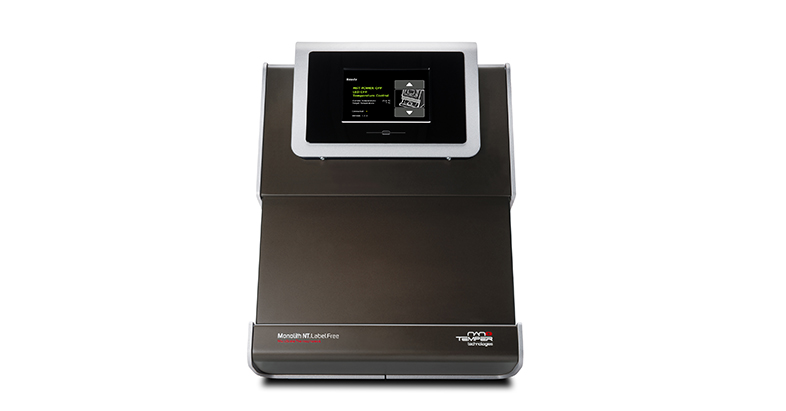
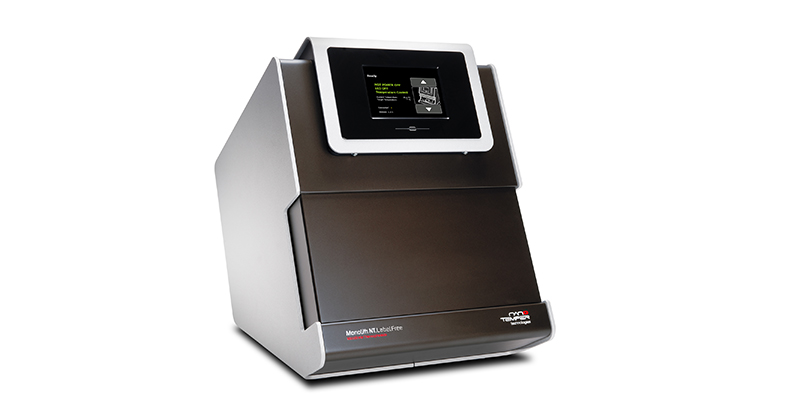
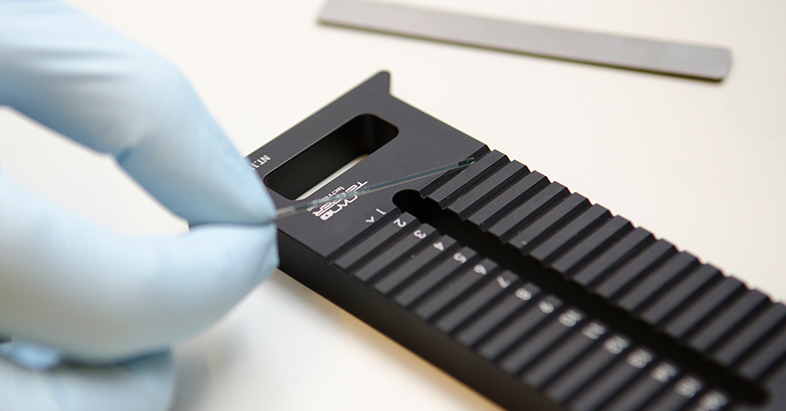
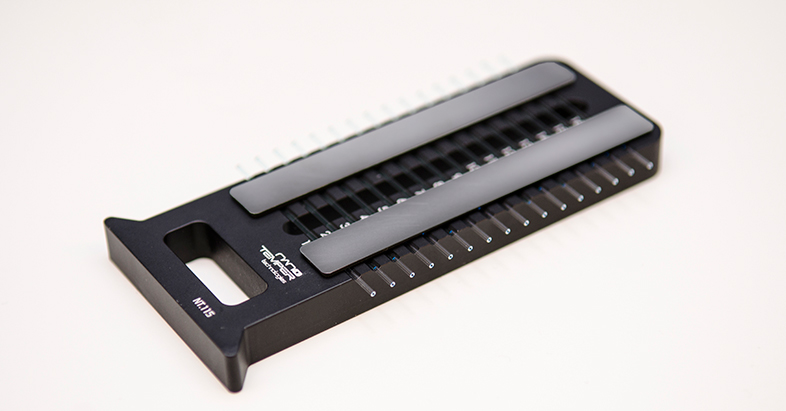







"MST is a versatile and valuable tool which we quickly adapted in our repertoire of methods."

"One mission of the Structural Research group within the Lead Identification and Optimization department is to quantitatively validate and characterize interactions of small molecules as well as new biological entities with protein targets. We employ various traditional biophysical methods such as SPR, Thermal Shift, ITC, NMR and X-ray crystallography.
Most recently we included Microscale Thermophoresis (MST) in our standard project support workflow and extended its application from affinity determinations to fragment screening approaches. MST is a versatile and valuable tool which we quickly adapted in our repertoire of methods. The impressive advantages of MST, namely the low sample consumption, the broad application range, and swift assay development make it a unique biophysical method. The measurement in free solution without the need of surface coupling saves time and avoids a potential source for false positive or negative results.
Our Structural Research group now also added the label-free version of the Monolith to our MST instrumentation portfolio, which gives us the possibility to choose to measure with high selectivity and sensitivity (NT.115). The labelfree version (NT.LabelFree) allows us to measusre without any additional sample modification depending on the need of the particular assay. In some cases, LabelFree MST allowed us to perform assays with otherwise "very ill" behaved proteins which were not amenable to any other biophysical technique. Generally, we find very good consistency between quantitative MST measurements and results stemming from other biophysical methods."
Dr. Markus Zeeb, Principal Scientist, Structural Research, Boehringer-Ingelheim, Germany
"We could gain a lot of essential information from our MST experiments"

A few years ago, we were seeking for a biophysical method orthogonal to ITC and SPR. With MicroScale Thermophoresis (MST) we found the ideal alternative and we were immediately convinced by the low sample consumption and immobilization-free setup.
Because of the scientific community being concerned about labeling Sirtuin enzymes or ligands, we further appreciated the truly label-free approach offered by the Monolith NT.LabelFree. We use this instrument mainly to characterize substrate and metabolite binding to the enzymes and to quantify the binding affinity of inhibitors and drug candidates. In addition, the Monolith NT.115 enables us to measure protein-protein interactions, which are difficult to assess with other methods because of the low protein amounts available.
Over the last years, we could gain a lot of essential information from our MST experiments enabling us to publish these comprehensive mechanistic insights together with high-resolution crystallographic data.
Finally, I would like to emphasize the customer-oriented attitude of this company. Their support team always has an open ear for our questions and offers help with challenging experiments. The company also appreciates our feedback on our experience with the technology and the instruments.
Prof. Dr. Clemens Steegborn, Head of the Biochemistry Department, University of Bayreuth, Germany
"MST is a versatile and valuable tool which we quickly adapted in our repertoire of methods."

"One mission of the Structural Research group within the Lead Identification and Optimization department is to quantitatively validate and characterize interactions of small molecules as well as new biological entities with protein targets. We employ various traditional biophysical methods such as SPR, Thermal Shift, ITC, NMR and X-ray crystallography.
Most recently we included Microscale Thermophoresis (MST) in our standard project support workflow and extended its application from affinity determinations to fragment screening approaches. MST is a versatile and valuable tool which we quickly adapted in our repertoire of methods. The impressive advantages of MST, namely the low sample consumption, the broad application range, and swift assay development make it a unique biophysical method. The measurement in free solution without the need of surface coupling saves time and avoids a potential source for false positive or negative results.
Our Structural Research group now also added the label-free version of the Monolith to our MST instrumentation portfolio, which gives us the possibility to choose to measure with high selectivity and sensitivity (NT.115). The labelfree version (NT.LabelFree) allows us to measusre without any additional sample modification depending on the need of the particular assay. In some cases, LabelFree MST allowed us to perform assays with otherwise "very ill" behaved proteins which were not amenable to any other biophysical technique. Generally, we find very good consistency between quantitative MST measurements and results stemming from other biophysical methods."
Dr. Markus Zeeb, Principal Scientist, Structural Research, Boehringer-Ingelheim, Germany
"LabelFree MST is one of the few true label-free/immobilisation-free instruments capable of measuring molecular interactions"

"As part of our drug discovery projects we use Microscale Thermophoresis (MST) as an orthogonal method to measure the binding affinity of compounds to their protein target and apply this fragment hit ID through to lead optimisation. MST complements our biophysical platform and has correlated well with other more established technologies. Because it uses small amounts of protein, MST has proved to be particularly useful to look at molecular interaction involving proteins that are difficult to express or purify. MST requires a relatively short time to setup new assays and is a powerful technique for buffer optimisation. Using the NT.115 MST instrument we have successfully measured small molecule-protein and protein-protein interactions in complex media. Finally, LabelFree MST is one of the few true label-free/immobilisation-free instruments capable of measuring molecular interactions. We have appreciated the professionalism and support from NanoTemper Technologies."
Dr. Nicolas Basse, Department of Structural Biology, UCB-Celltech, UK
"We could gain a lot of essential information from our MST experiments"

A few years ago, we were seeking for a biophysical method orthogonal to ITC and SPR. With MicroScale Thermophoresis (MST) we found the ideal alternative and we were immediately convinced by the low sample consumption and immobilization-free setup.
Because of the scientific community being concerned about labeling Sirtuin enzymes or ligands, we further appreciated the truly label-free approach offered by the Monolith NT.LabelFree. We use this instrument mainly to characterize substrate and metabolite binding to the enzymes and to quantify the binding affinity of inhibitors and drug candidates. In addition, the Monolith NT.115 enables us to measure protein-protein interactions, which are difficult to assess with other methods because of the low protein amounts available.
Over the last years, we could gain a lot of essential information from our MST experiments enabling us to publish these comprehensive mechanistic insights together with high-resolution crystallographic data.
Finally, I would like to emphasize the customer-oriented attitude of this company. Their support team always has an open ear for our questions and offers help with challenging experiments. The company also appreciates our feedback on our experience with the technology and the instruments.
Prof. Dr. Clemens Steegborn, Head of the Biochemistry Department, University of Bayreuth, Germany
Binding of Calcium Ions to Synaptotagmin measured with fluorescence label and label-free
Interaction of maltose binding protein (MBP) with maltose in a truly label-free assay
Binding of Calcium Ions to Synaptotagmin measured with fluorescence label and label-free
Interaction of maltose binding protein (MBP) with maltose in a truly label-free assay
Structure and function analyses of the purified GPCR human vomeronasal type 1 receptor 1
Scientific Reports 1 (172). doi:10.1038/srep00172 (2011)
Karolina Corin, Philipp Baaske, Sandra Geissler, Christoph J. Wienken, Stefan Duhr, Dieter Braun, Shuguang Zhang
Keywords
Monolith NT.Labelfree; Membrane Proteins
A Robust and Rapid Method of Producing Soluble, Stable, and Functional G-Protein Coupled Receptors
PLoS ONE 6(10): e23036, doi:10.1371/journal.pone.0023036 (2011)
Karolina Corin, Philipp Baaske, Deepali B. Ravel, Junyao Song, Emily Brown, Xiaoqiang Wang, Sandra Geissler, Christoph J. Wienken, Moran Jerabek-Willemsen, Stefan Duhr, Dieter Braun, Shuguang Zhang
Abstract
Membrane proteins, particularly G-protein coupled receptors (GPCRs), are notoriously difficult to express. Using commercial E. coli cell-free systems with the detergent Brij-35, we could rapidly produce milligram quantities of 13 unique GPCRs. Immunoaffinity purification yielded receptors at >90% purity. Secondary structure analysis using circular dichroism indicated that the purified receptors were properly folded. Microscale thermophoresis, a novel label-free and surface-free detection technique that uses thermal gradients, showed that these receptors bound their ligands. The secondary structure and ligand-binding results from cell-free produced proteins were comparable to those expressed and purified from HEK293 cells. Our study demonstrates that cell-free protein production using commercially available kits and optimal detergents is a robust technology that can be used to produce sufficient GPCRs for biochemical, structural, and functional analyses. This robust and simple method may further stimulate others to study the structure and function of membrane proteins.
Keywords
Cell Line; Electrophoresis, Polyacrylamide Gel; Humans; Ligands; Protein Conformation; Protein Structure, Secondary; Receptors, G-Protein-Coupled/chemistry/*metabolism/physiology; Solubility; Monolith NT.Labelfree; Membrane Proteins
Structure and function analyses of the purified GPCR human vomeronasal type 1 receptor 1
Scientific Reports 1 (172). doi:10.1038/srep00172 (2011)
Karolina Corin, Philipp Baaske, Sandra Geissler, Christoph J. Wienken, Stefan Duhr, Dieter Braun, Shuguang Zhang
Keywords
Monolith NT.Labelfree; Membrane Proteins
A Robust and Rapid Method of Producing Soluble, Stable, and Functional G-Protein Coupled Receptors
PLoS ONE 6(10): e23036, doi:10.1371/journal.pone.0023036 (2011)
Karolina Corin, Philipp Baaske, Deepali B. Ravel, Junyao Song, Emily Brown, Xiaoqiang Wang, Sandra Geissler, Christoph J. Wienken, Moran Jerabek-Willemsen, Stefan Duhr, Dieter Braun, Shuguang Zhang
Abstract
Membrane proteins, particularly G-protein coupled receptors (GPCRs), are notoriously difficult to express. Using commercial E. coli cell-free systems with the detergent Brij-35, we could rapidly produce milligram quantities of 13 unique GPCRs. Immunoaffinity purification yielded receptors at >90% purity. Secondary structure analysis using circular dichroism indicated that the purified receptors were properly folded. Microscale thermophoresis, a novel label-free and surface-free detection technique that uses thermal gradients, showed that these receptors bound their ligands. The secondary structure and ligand-binding results from cell-free produced proteins were comparable to those expressed and purified from HEK293 cells. Our study demonstrates that cell-free protein production using commercially available kits and optimal detergents is a robust technology that can be used to produce sufficient GPCRs for biochemical, structural, and functional analyses. This robust and simple method may further stimulate others to study the structure and function of membrane proteins.
Keywords
Cell Line; Electrophoresis, Polyacrylamide Gel; Humans; Ligands; Protein Conformation; Protein Structure, Secondary; Receptors, G-Protein-Coupled/chemistry/*metabolism/physiology; Solubility; Monolith NT.Labelfree; Membrane Proteins

 More than binding affinities
More than binding affinities